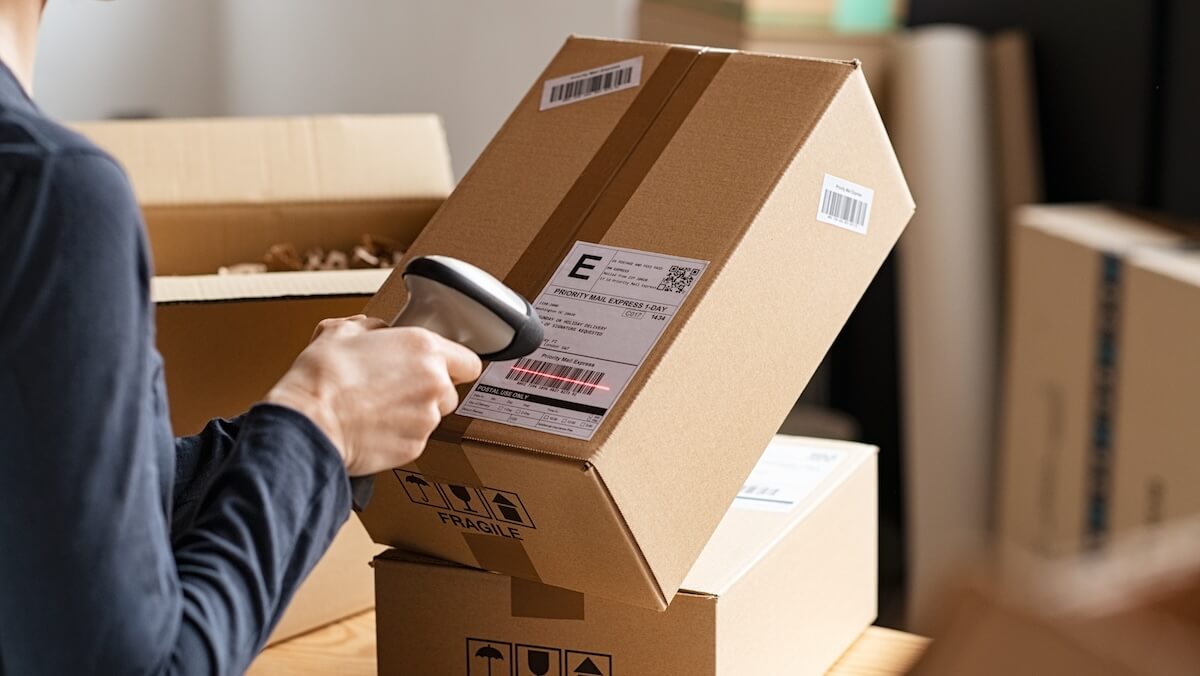Buying Business Property in a Foreign Country: A Comprehensive Guide
Thinking about buying business property in a foreign country? Explore key considerations, legal requirements, and tips for success.

With over 181 million users, Amazon Europe is a large segment of the global eCommerce market.¹ For US-based Amazon sellers, gaining access to the European market can help you expand your business globally.
This guide will walk you through the process of how to sell on Amazon Europe as a US-based seller, setting you up for success.
In short, yes—you can sell your products on Amazon Europe from the US.
Amazon’s Global Selling program enables US-based sellers to expand into markets across the globe. This includes Europe. You’ll need to set up a European Unified Account. This enables you to sell across all European Amazon markets from a single account.²
You’ll also need to be mindful of tax and legal regulations to avoid compliance issues.
Selling on Amazon Europe from the US is an easy way to reach an international customer base. Instead of having to set up a local business entity, you can start selling straight away.
Selling on Amazon Europe gives you access to a wide range of markets across the continent.
Here’s a list of the European countries with their own Amazon marketplaces:
You can still sell your products in any of the countries in Europe (as long as you comply with local laws). But you need to register your seller account with one of the countries above.
Germany tends to be a great place to start selling in Europe. Its central location makes it easy to expand into other countries within Europe.
The United Kingdom was also a good option given that it’s an English speaking country. Brexit, however, has made this more challenging when it comes to shipping products from the UK to Europe. So it’s best to keep your European Amazon base in mainland Europe.
Understanding the characteristics of each market is key to your success as a seller.
Getting started as a US-based seller on Amazon Europe is straightforward. Amazon’s Global Selling program makes it easy to understand the steps involved.
Here’s an overview of how to go about getting started on Amazon Europe.
With more than 181 million users, getting a foothold in Amazon Europe can help boost your business’s sales and revenue. This in turn can strengthen cash flow.
But to be successful, you should begin by understanding the market.
Conducting market research will allow you to find out which countries have the highest demand for your product. Taking advantage of Amazon’s market research tools and Google Trends will make this process easier.
Once you’ve determined your target market, research your competition. Understand your competitors’ pricing, product offerings and marketing. This will give you insight into what your European customers want as well as how your business can have an edge. This includes understanding local consumer preferences, such as eco-friendly products.
After you have a clear understanding of your chosen market’s competition and consumer base, the next step is researching local legal requirements and compliance.
Some laws to focus on include but aren’t limited to:
Product compliance regulations not only vary between the US and Europe. They can also vary between European countries. For this reason, it’s key to ensure your product meets the regulations of every European country you wish to sell in.
There are also pan-European product regulations you’ll need to meet, such as CE certification for certain product groups.
Another factor to consider is Value Added Tax (VAT), the equivalent of US sales tax. VAT is a tax on sales that most European countries require sellers to collect. VAT rates and rules vary by country. For instance, Germany has a VAT rate of 19%, while France has a rate of 20%.⁴ ⁵ You’ll need to register for VAT in each country where you sell and collect this tax from your customers.
| 💡 For US-based sellers, it’s important to know that VAT is included in the retail price of products in Europe.⁶ |
|---|
Keep in mind that when shipping products into Europe, you may face import duties and taxes. These costs can impact your pricing and profits. Be sure to research the customs rules for each country to understand what you need to pay and how it will affect your business.
Reaching out to a local compliance expert can make this process easier to navigate.
To start selling on Amazon Europe, you first need to create a European Unified Account. This account is convenient as it enables you to sell in all European countries from a single account. That eliminates the need to have a separate account for every country you sell in.
To create an account, you’ll need to provide details about your business, such as your tax information and bank account details.
When it comes to your shipping and fulfillment method, you have three options to consider.
Which fulfillment service you end up choosing depends on your individual business needs.
Amazon makes it easy for US-based sellers to break into the European market. You can take advantage of Amazon’s Build International Listings (BIL) tool. Amazon's BIL tool helps to streamline the listing creation process.
For example, using the BIL tool, you can synchronize pricing and add offers across all your marketplaces.⁷ This can save you time and make your business more efficient.
When creating product listings, they’ll need to be in the local language of your target marketplace. High-quality translations are essential for clear communication and avoiding misunderstandings.
In some instances, your US product listings may already have been translated into the target market’s local language.⁸ If not, you’ll need to contract the help of a native speaker or use an online translation service. Ensuring accurate product listing translations is essential.
As with product listings in the US, you should take advantage of search engine optimization (SEO) strategies. Using SEO can help your product to reach a wider audience.
The last step is to launch your product. Running offers, ads and discounts can help promote your product.
To change your Amazon Seller region, you’ll need to:
After changing your seller region, you may be prompted to update certain information. This can include your payment, order fulfillment and shipping details.
When shipping your Amazon products to Europe, you have two options to choose from.
The first option is managing the entire shipping process yourself. You’ll need to select a reliable shipping provider, such as UPS or DHL. You’ll also need to select a shipping provider based on price and delivery times that best suits your business’s needs.
The second option is using FBA or a third-party logistics provider to handle the process. That way, you’ll have your products shipped to a Fulfillment center in Europe, which can then be managed by FBA.
Keep in mind that even when using FBA, you’ll still be responsible for meeting local regulations. That includes import and export regulations, as well as local customs. That means you’ll be the exporter/importer of record. Amazon will not take responsibility for handling export and import regulations.
If you want to avoid the hassle of export and import regulations and customs, you can use a customs broker or freight forwarder to manage the process.
Once you’ve shipped your products, you can choose how to distribute them. You can either store them in a single warehouse or spread them across Fulfillment centers.
Selling on Amazon Europe gives you access to a huge eCommerce market. This gives your brand better visibility, enabling you to build an international reputation.
As a US-based seller on Amazon Europe you can strengthen your cash flow during periods of low domestic demand. When sales drop in the US, your European sales can keep your revenue streams stable. This leads to greater financial security and sales revenue. Long-term, this can help you to grow your business. It can therefore give you a competitive edge in your home market.
For example, in 2020, more than 2,700 products were sold per minute on Amazon Europe.⁷ You can use this demand to expand your business further.
Expanding into international markets can boost your sales and revenue, growing your business. But dealing with currency conversions can cost you a lot in fees—both upfront and hidden.
Wise offers transparent fees and the mid-market exchange rate with no hidden fees. This allows you to keep more of your earnings from your European sales. Simply connect your Wise account to your Amazon seller account.
Using Wise Business can help you save on currency conversion fees. Wise is not a bank, but a Money Services Business (MSB) provider and a smart alternative to banks. The Wise Business account is designed with international business in mind, and makes it easy to send, hold, and manage business funds in 40+ currencies. You can get major currency account details for a one-off fee to receive Amazon Europe payments like a local.
Find out more about Wise Business
You can withdraw your Amazon earnings in Euros directly into your Wise EUR balance. This avoids the need of converting your earnings, saving you on conversion fees. And when you do need to convert your funds to USD, you'll always get the mid-market rate (the one you'll see on Google).
| Read the guide on how to open a Wise Business account |
|---|
Sources:
All sources checked August 2024.
*Please see terms of use and product availability for your region or visit Wise fees and pricing for the most up to date pricing and fee information.
This publication is provided for general information purposes and does not constitute legal, tax or other professional advice from Wise Payments Limited or its subsidiaries and its affiliates, and it is not intended as a substitute for obtaining advice from a financial advisor or any other professional.
We make no representations, warranties or guarantees, whether expressed or implied, that the content in the publication is accurate, complete or up to date.

Thinking about buying business property in a foreign country? Explore key considerations, legal requirements, and tips for success.

Understand the definition of a business partnership, explore its types, advantages, and disadvantages, as well as how to form a partnership

Learn all about forming a Wyoming LLC, including benefits, formation process, costs, and privacy protections. Discover why Wyoming is a top choice for LLCs

Learn about forming an LLC in Arkansas, including benefits, costs, taxes, and the formation process. Discover why Arkansas is a great state for LLCs.

Learn about forming an LLC in Indiana, including benefits, costs, taxes, and the formation process. Discover why Indiana is a great state for LLCs.

Discover the benefits and setup process of a manager managed LLC. Learn the differences between manager managed and member managed LLCs and more.